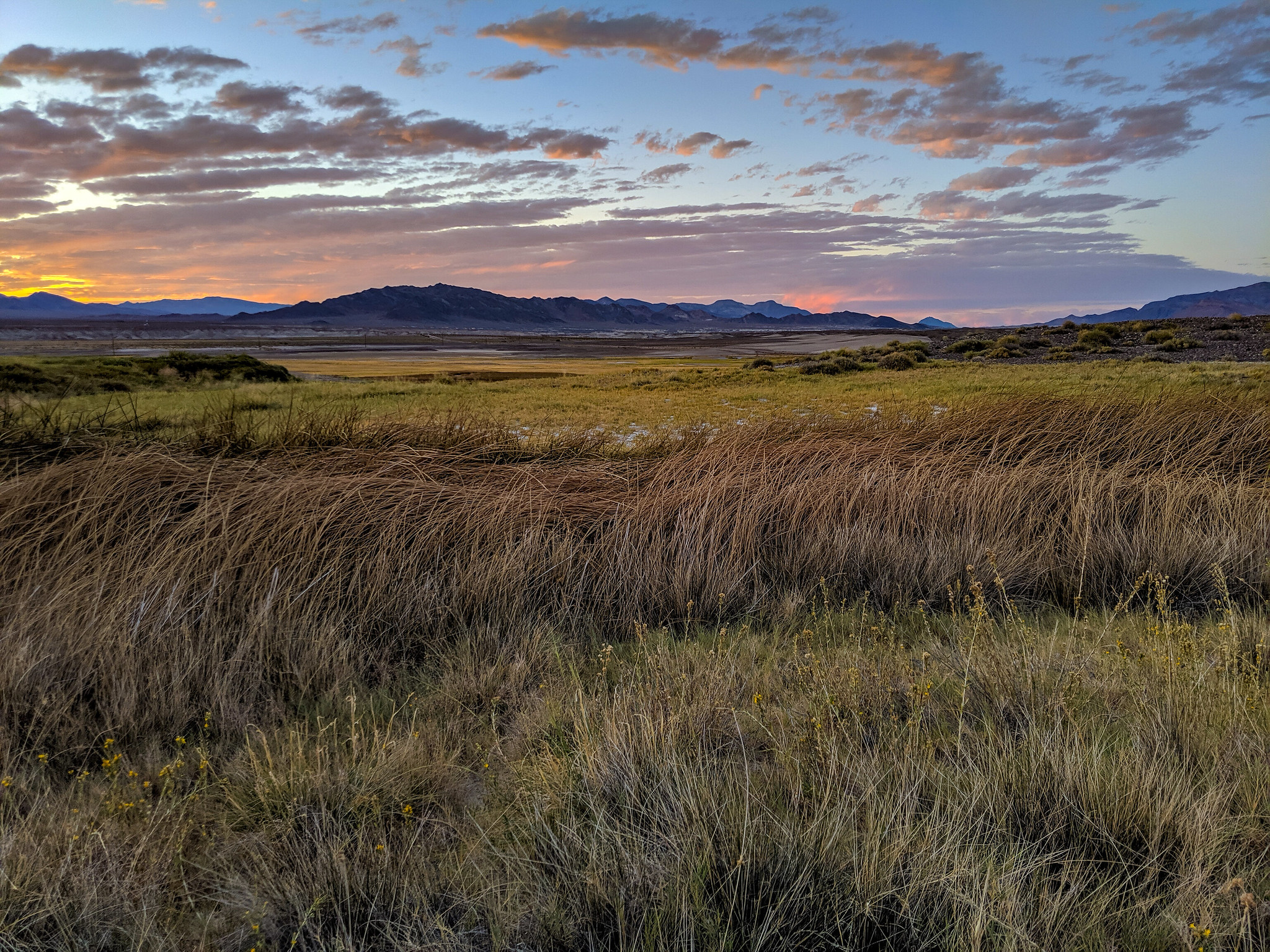by Mason Voehl Executive Director
Questions of values are the hardest to answer.
I was asked recently to put together a brief presentation describing the key features, resources, and values of the Amargosa Basin. There is a straightforward approach to crafting such a presentation: list important land designations (a wild and scenic river, wilderness, national conservation lands, areas of critical environmental concern, etc.), cite statistics regarding threatened and endangered species (15 found in the basin), endemic species that live nowhere else (more than 50), and so on and so forth. Such an approach is sensible and sufficient for understanding why the Amargosa Basin matters.
By its own virtues, the Amargosa Basin is a crown jewel of the Mojave Desert, a wonderfully improbable illustration of the power of water to shape life on our planet. But there remains a deeper value to be described, one that becomes radically clarified when held up against the backdrop of global and historical trends concerning wetlands.
Wetlands are areas where water covers soil or is present at or near the surface of the soil all year or during certain seasons. Wetlands account for approximately 6-7% of the world’s land surface and they can be found in coastal or inland regions on every continent except Antarctica. In addition to providing up to 40% of the world’s species with crucial habitat for living and breeding, wetlands also store twice as much carbon as all of the world’s forests combined. They buffer floods, provide water and shade during periods of drought, and sustain the livelihoods of about 1 in 8 people on Earth.
Based on these and other merits, one would think that wetlands would be prized and therefore historically protected.
In reality, it is not hyperbolic to state that we are living in an era of wetland apocalypse.
According to recent reports, we are losing wetlands at a dizzying and nauseating rate. Wetlands are currently vanishing three times faster than the world’s forests. Approximately 35% of the world’s total remaining wetlands were lost between the years of 1970-2015 alone. In California, more than 91% of wetland habitats have been lost compared to pre-colonial conditions, a higher percentage of loss than any other state in the nation.
Human activity is the inarguable driving factor behind wetland habitat loss. Groundwater pumping, alterations to flows, invasive species migration and pollution are the most potent threats to wetland integrity. Habitat loss places more than 25% of all wetlands plants and animals at risk of extinction in the coming two decades. Wetland destruction also exacerbates climate change both by eliminating effective carbon sinks while simultaneously releasing copious amounts of carbon sequestered over millennia into the atmosphere. Traditional societies that for centuries have coexisted with and depended upon the materials and sustenance provided by the Earth’s wetlands are being rapidly uprooted and displaced as habitat degrades. Though apocalypse is a word that should never be used lightly, unfortunately in this case it is a fitting term.
Though such trends elicit strong emotions of outrage and grief, they throw into very sharp relief the true joy and wonder that is the wetland ecosystem of the Amargosa Basin. The fact that so much of the ecosystem remains intact, acting as permanent habitat for a suite of rare wildlife, as a crucial stopover for more than 230 species of birds, and as a refuge during periods of extreme heat and drought is frankly miraculous.
Certainly the ecosystem has sustained losses, such as the extinction of the once endemic Tecopa pupfish due to alterations of groundwater flows. Certainly the threats of habitat loss and extinction associated with climate change and groundwater depletion still loom quite large. But that hundreds of thousands of acres of wetland habitat remains viable in one of the world’s hottest and driest deserts is a testament to the power of this place on the communities that continue to act as its caretakers.
In March, our organization will take some large steps towards securing a commitment from those involved in the conservation of the Amargosa Basin to the continued protection of this miraculous improbable wetland ecosystem as the vestiges of a once wilder world. We’ll continue to share news of our progress and will soon be looking to YOU, our members, to help inform this next chapter of collaborative conservation in the Amargosa Basin. Stay tuned, and for the love of all that remains, support the world’s wetlands today.
References: https://geochange.er.usgs.gov/sw/impacts/hydrology/wetlands/ https://unfccc.int/news/wetlands-disappearing-three-times-faster-than-forests https://livingplanet.panda.org/en-US/ https://unstats.un.org/sdgs/report/2022/goal-15/


